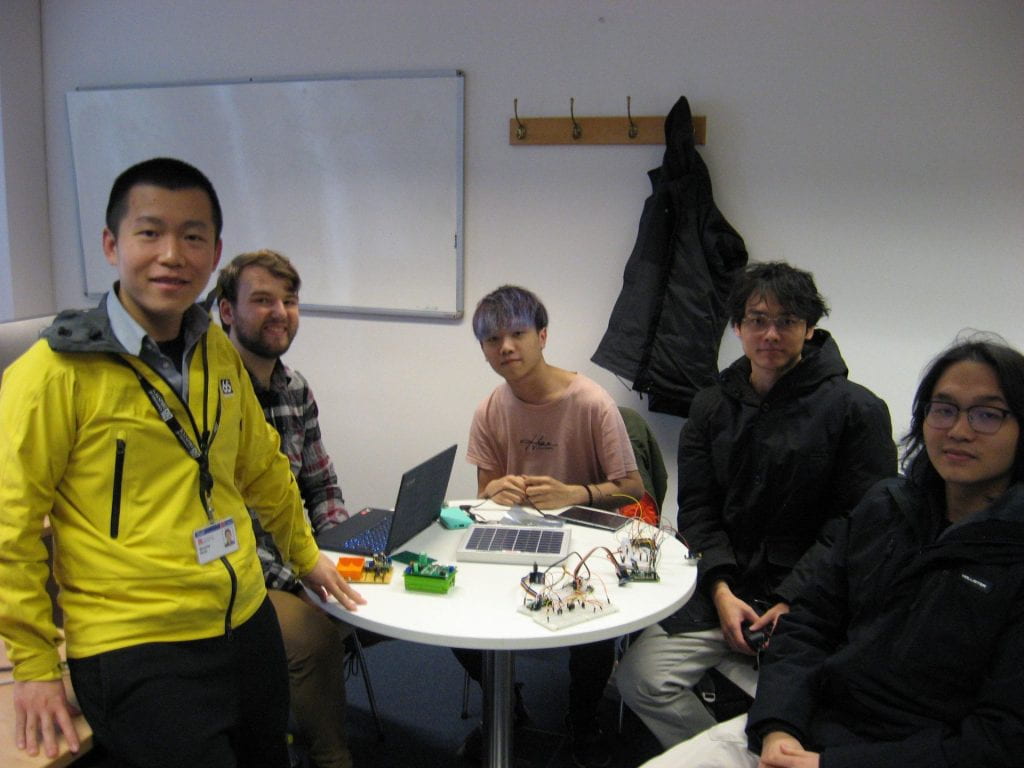Connected devices form a core part of daily life in the UK today. We rely on consumer connectable products to socialise, work and live our lives. Users must be able to trust that these devices are designed and built securely, whether used in the home or in critical infrastructure. The UK Government has released a set of Secure by Design guidance and principles aimed at protecting citizens and businesses from the threats posed by poorly secured IoT devices.

SWAN aims to highlight the importance of Secure by Design principles, particularly in terms of protecting against ‘over-the-air’ attacks on IoT and other wireless devices. Educating engineers on Secure by Design and the importance of applying these principles to the RF Open Attack Surface is a key objective for SWAN.
This year, SWAN academic Shuping Dang has been introducing these principles to undergraduate students through a series of projects using Raspberry Pis to design low-cost energy-efficient security solutions for IoT devices in the home.
Raspberry Pi Based Lightweight IoT for Smart Homes
Four undergraduate students were invited to work on developing four different functional modules designed to improve security, reliability, and adaptability of lightweight IoT devices. Each student worked on one of the following modules:
- Anomaly Detection and Warning Module
- Security Camera Module
- Environment Monitoring Module
- Safety and Access Control Module
The theme project aims to investigate and provide an energy-efficient and easy-to-implement IoT solution enabling a number of intelligent and safeguard functions for smart homes. Different from conventional IoT solutions widely deployed today, the transformative features of this novel IoT solution include:
 Minimising standby energy consumption, relying only on solar energy to power the entire IoT system;
Minimising standby energy consumption, relying only on solar energy to power the entire IoT system;- Plug-and-play allowing quick, easy, and low-cost deployment suited for a variety of buildings in developing, remote, and rural areas;
- Employing distributed information and energy management architectures to guarantee system reliability.
The prototyped IoT system is expected to satisfy the requirements of sustainable development and contribute to achieving the UN Sustainable Development Goals 7 and 11, i.e., Affordable and Clean Energy and Sustainable Cities and Communities.
Raising awareness of Secure by Design to protect the RF Open Attack Surface
To protect connected devices from threats, including attacks over-the-air, we must teach engineers about the importance of building security features into IoT devices at the design stage. Projects like this are an excellent opportunity to install a Secure by Design mindset in young engineers at the early stages of their careers.
If you would like to read more about SWAN’s work on anomaly detection and secure RF architecture design, take a look at the resources and publications page on our website.
SWAN Prosperity Partnership
SWAN is an EPSRC Prosperity Partnership project dedicated to the creation of Secure Wireless Agile Networks (SWAN) that are resilient to both cyber attacks and accidental or induced failures. The partnership is made up of contributors from the Smart Internet Lab at the University of Bristol, Toshiba Research Europe Ltd, GCHQ, and Roke Manor Research Ltd.
Interested in reading more about SWAN and our programme of research? Take a look at our website for more information or sign up to our newsletter for regular updates on SWAN activities and opportunities to get involved.
